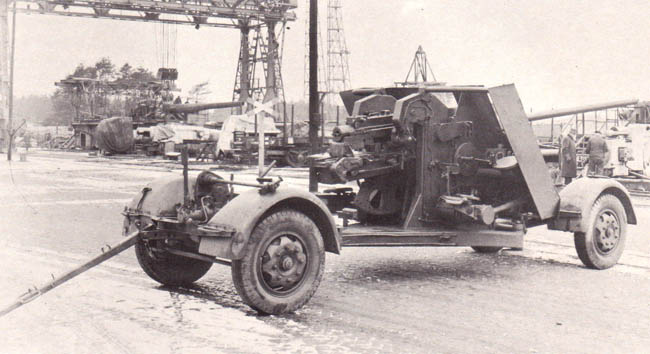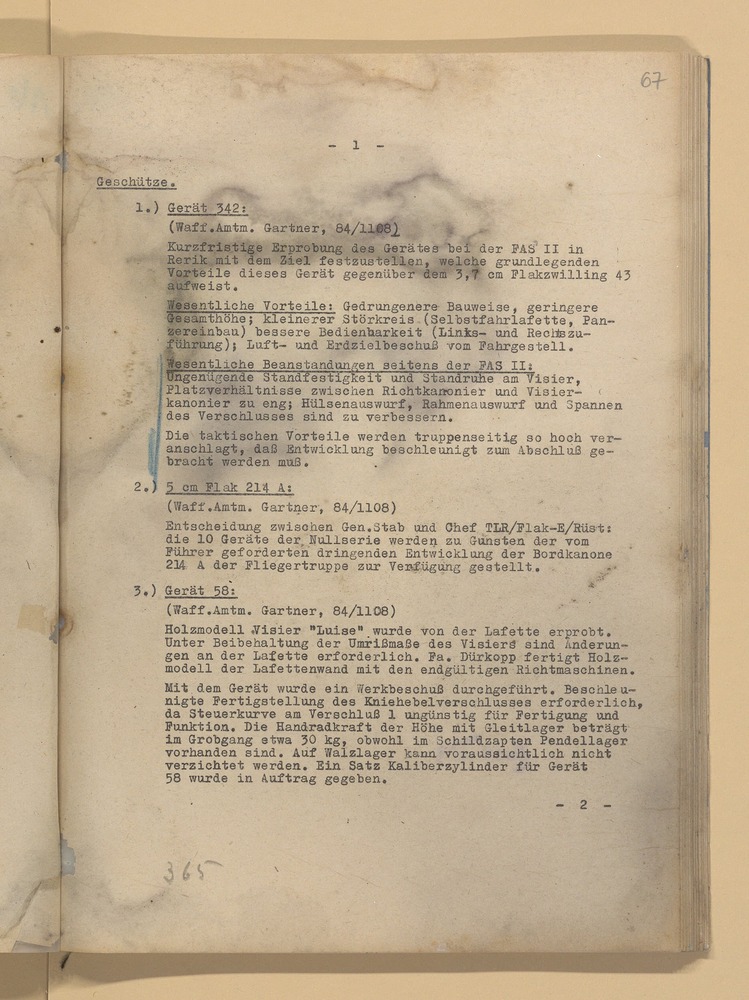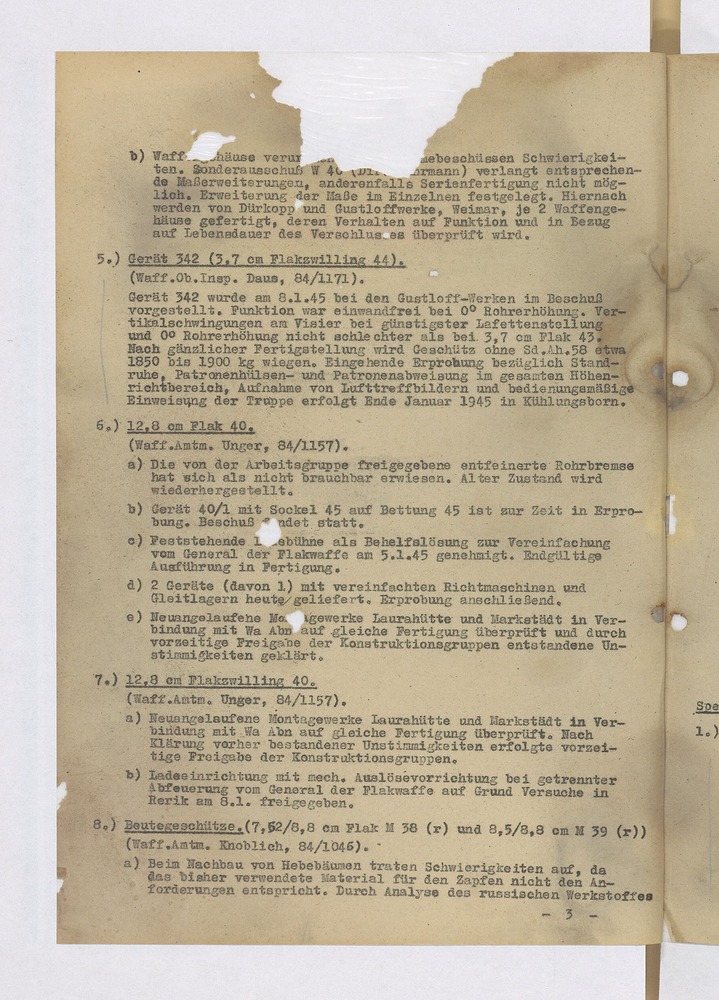I found a bunch of data on the 5,5 cm Gerät 58 (Flak 58), was it test mounted on something?
And iirc there should be some more info in the Bundesarchiv.
Interesting.
" 4cm Flak 28 (Bofors) L/60
This weapon was originally a 1924 Krupp development. The Reichswehr was not interested, and the gun was apparently sold to Sweden."

Big news, with the upcoming 2 part vehicles such as this
EldE 98: Missile Trolley we can suggest a pulling vehicle and a gun on a standart lafett, if it can be used in the pulling configuration. Such would be an example Sd.Kfz.7 with 8,8 cm Flak or so.
So maybe the Gerät 58 which also had its lafett build could potentially be suggested.
And maybe some other guns.
So for the Gerät 58 we would need to know what vehicle pulled it on the proving grounds.
Otherwise feel free to post here pictures of AA guns that are on a trailer or with trailer and pulled, that can be interesting and suggested after the update is live.
Maybe they did change to the full 37x380mmR casing?
By an earlyer chart with propellant testing they used an 735g round with some 392g, which is already more than the original 364g.
Google sayes the full length is however some 516,5mm, while the full length of the 341 is just 420mm.
So maybe it uses a full new casing? With a little math i come to a maybe 283,5 or 284 or 285mm case?
Thanks, I guess we can only hope for uit to be added now.
I found another source giving the Flak 18 830m/s for 635g shell. So 835m/s for 610g (FES) shell is easily reachable. Angaben über Heeres-Geschütze Konstruktion Rheinmetall und eingeführte Geräte.
3,7 cm Flak 39 L/57 (Basically a Flak 18 where the gunnerposition was made for 2 persons with split up horizontal and vertical traverse and a shorter loading tray.)
Made for Export, in this case Hungary. They survived a long time as they were left in storage.
In contrast to the army, the propellant powder used by the navy was dibasic, i.e. impregnated with nitroglycerine. This increased the weight of the propellant charge but not its volume. As a result, the propellant charge not only has a much higher energy content, it is also virtually insensitive to moisture and wetness.
Cool, as a side note, i found out that it used a new 280mm casing.
Isn’t there some downsides to using nitroglycerin?
Why wouldn’t anyone use that?
I think there were plans to super charge the TNSh (ShVAK) ammo using that method but in the end they didn’t adopt it.
In a report about Ho-5 ammunition the examined shells contained ~19.4g propellant but it also talks about shells with 21.5g containing nitroglycerin.
Put simply, nitrocellulose powders with added nitroglycerine, the so-called dibasic powders (or double base powder), have the advantage over pure nitrocellulose powder that they have a much higher energy content for the same powder volume. The disadvantage is a higher combustion temperature and therefore greater wear and tear on the barrel and greater sensitivity to higher temperatures during transport and storage. There is a risk that the nitroglycerine will be sweated out and the ammunition will become unsafe to handle.
Attempts are being made to counter this with multi-base powders. In addition to nitroglycerine, nitroguanidine is added, for example. This lowers the combustion temperature, which is more gentle on the barrels.
There are other explosives that are added as well as other additives that make the propellant powder safer to handle, but I am not aware of them.
As a reloader for handgun cartridges, I only know black powder and black powder substitutes as well as NC and dibasic powders.
As far as I know, there are no polybasic powders on the market for this area of application.
DVC!
So it’s similiar to Cordite, that it increases chamber pressure considerably but also produces a lot of heat.
Which lead to British Browning .303 MGs to be built as open bolt guns, to prevent cook offs.
With the Ho-5 using the heat senstivive Ma-202 fuzeless shell, they probably got rid of the nitroglycerin, as both higher velocity shells and nitroglycerin would cause the barrel to heat up more quickly.
No problem for a changable heavy flak barrels but for autocannons that could quickly lead to overheating issues.
Interestingly, ShVAK cannons originally fired 91g shells with cordite propellant, but they later switched to N.C. flakes.
New Info on 20mm Flak ammo, also removed the Mg 151 and Mg FF from here, its still (and more up to date) in the Aircraft armarment section, link at the top of the Post.
Instead i have also chonsen to add some captured armarments to the list, and possibly Towed Flaks, since there is still a possiblity that they will some day also come to the game.
Anyone know more about the armarment of the Ostwind II? Was it possibly also intended to be Gerät 341, as it has fall appart 10 Round frames designed for side by side operation, while the normal 8 round frames of the Flak 43 would interfer with each other. The in game Ostwind II would not work how it currently is.
This is all I have:


But what exactly are the Flakzwilling 44? Modified Flak 43? I read that its the production name of the Gerät 341?
Aparently In the internet publication work of Mr. Vladimír Francev on captured armored vehicles in the Czechoslovak army (3rd part)) it is stated that in the report of the VTV (Tank Army Command) from 10/1947, among the German equipment collected from all over Czechoslovakia there is also an anti-aircraft tank with a twin 3.7 cm cannon on the Pz.Kpfw. IV platform. Given that at the end of the war, the production of the German plant Deutsche Eisenwerke AG-Werk Stahindustrie was moved from Duisburg to a branch plant in Teplice, it is possible that the hypothetical prototype Ostwind II (?) also reached Czech territory. Vladimír Francev: Kořistní obrněná vozidla ve výzbroji čs. armády (3. část) – Československá armáda
Yes, ostwind probably use Gerät 342. They modified the feeding mechanism of the Flak 43, among other things, allowing it to be arranged side by side horizontally, rather than vertically as in the Flak 43 Zwilling.
Interesting, however
RH 8/180 contains the Gerät 341 and names it further down Flak 44. (Miss interpretation on my part)
Also your document just sayes that its better than the Flak 43, but doesnt actually say what the Flak 44 is, beyond the Gerät 342, no data on it itself.
is there more to it?















![Cordite! The Royal Naval Cordite Factory, Dorset, UK - 40 Minute Version [2024]](https://img.youtube.com/vi/HzFzVSPsIo8/hqdefault.jpg)

